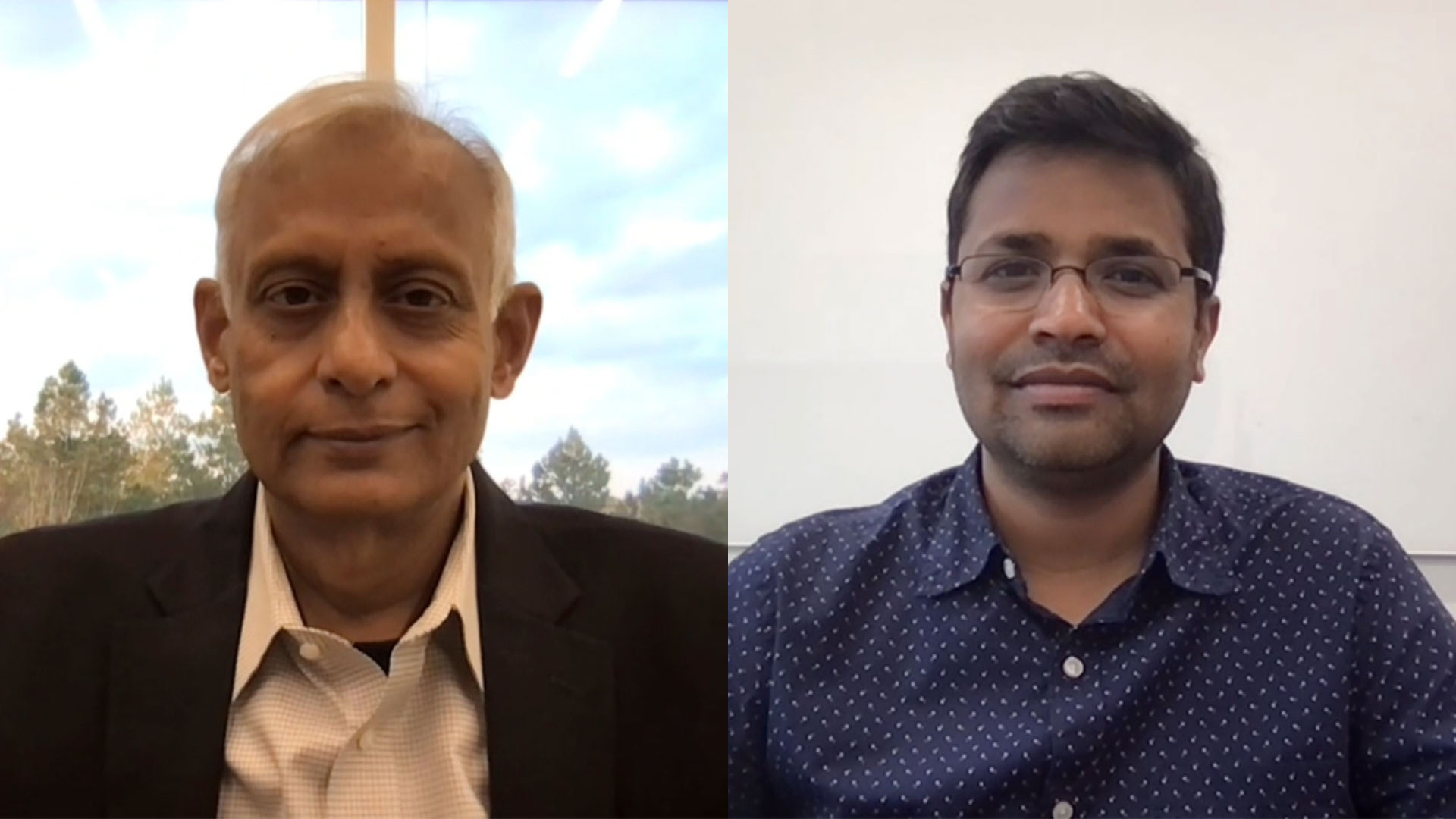 CLOUD
CLOUD
 CLOUD
CLOUD
 CLOUD
CLOUD
Transforming the monolithic architecture of a traditional financial services enterprise is a mammoth project. Not only does it have to be done right, but it also has to be done invisibly without any disruption to the day-to-day operations of the company.
“It has fundamental implications to people in their daily lives,” said Niranjan Ramsunder (pictured, left), chief technology officer and head of data services at UST Global Inc. “Someone going to buy milk at the grocery store cannot have their transaction stopped. It is not like I can be 99% right — you have to be right.”
Ramsunder and Raghu Bongula (pictured, right), senior vice president of engineering at TSYS, a Global Payments company, spoke with John Furrier, host of theCUBE, SiliconANGLE Media’s livestreaming studio, during AWS re:Invent. They discussed how UST Global has supported TSYS through its transformation process in a financial services cloud use-case example. (* Disclosure below.)
TSYS isn’t a household name, but the company supports the daily operations of thousands of businesses and people worldwide. It is the number one third-party credit provider in the U.S., U.K., Ireland and, through subsidiary Union Pay Venture, in China as well.
Before starting its cloud transformation, the company had a well-tuned process in place with solutions that had been running at scale for years in an on-premises environment. It managed thousands of transactions per second in the case of real-time transactions and very high throughput workloads at hundreds and thousands of transactions per second through its mainframes — all at very low latency, according to Bongula.
“How do you take a system like this and break it down into microservices and apply it on the cloud?” he asked.
The secret is to change the delivery method without changing the principles and functionalities that TSYS had established over 30 years of running its existing systems, according to Ramsunder. UST supported this by documenting TSYS’ systems and “ensuring that all the rules and subroutines and the nested loops within that get translated correctly and get tested correctly as they move to the cloud,” he said.
The path TSYS took to the cloud was an iterative migration. This relied on building a data fabric framework, where applications could exist simultaneously both on-prem and in the cloud to provide absolute assurance of a seamless migration.
“We build techniques using [a] pilot testing framework that allows us to do an A/B testing, which is the application is running on the cloud, the application is running on-premise,” Bongula stated. “We run the transaction, and we complete it at both locations and make sure that it behaves the way we have anticipated it to behave.”
UST is not re-platforming, according to Ramsunder. “We are rewriting all of the critical activities, because the paradigms have shifted,” he stated.
Watch the complete video interview below, and be sure to check out more of SiliconANGLE’s and theCUBE’s coverage of AWS re:Invent. (* Disclosure: UST Global Inc. sponsored this segment of theCUBE. Neither UST Global nor other sponsors have editorial control over content on theCUBE or SiliconANGLE.)
THANK YOU